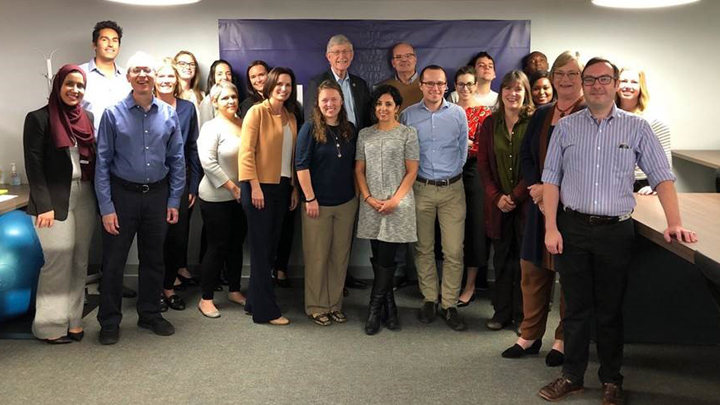Scripps Research Institute
Visiting with an All of Us Research Program Team
Posted on by Dr. Francis Collins

Drug Designer’s Cup of Tea
Posted on by Dr. Francis Collins
Medicinal chemists are the molecular architects of the drug development world—they do whatever it takes to design and build compounds with therapeutic potential. They are precise, they handle toxic chemicals under extreme conditions, they are continuously developing new structures, and they don’t rest until the job is done.
These chemists begin with an organic chemical “scaffold” (generally made up of carbon, hydrogen, oxygen, nitrogen, and a few other atoms) and then tinker; they often create hundreds of incrementally different versions of the same structure, adding a side chain of additional atoms here or there, to improve the potency or selectivity of the drug. It is painstaking, costly research.
That’s why the new “toolkit” developed by NIH-supported researchers at The Scripps Research Institute in La Jolla, CA, and featured in the November 28th issue of Nature, is such a big hit [1]. The researchers have created a collection of 10 new recipes that can be used to modify “heterocycles”—flat, ring shaped molecules made of carbon and nitrogen that are the building blocks for many drugs. The presence of nitrogen traditionally makes these heterocycles very uncooperative—they are difficult to dissolve and frequently deactivate the reagents or catalysts with which they are supposed to react. Until now adding a branch to one of these molecules could take days or even weeks, at the cost of thousands of dollars per gram (just for comparison, a gram of gold is currently worth about $55).

